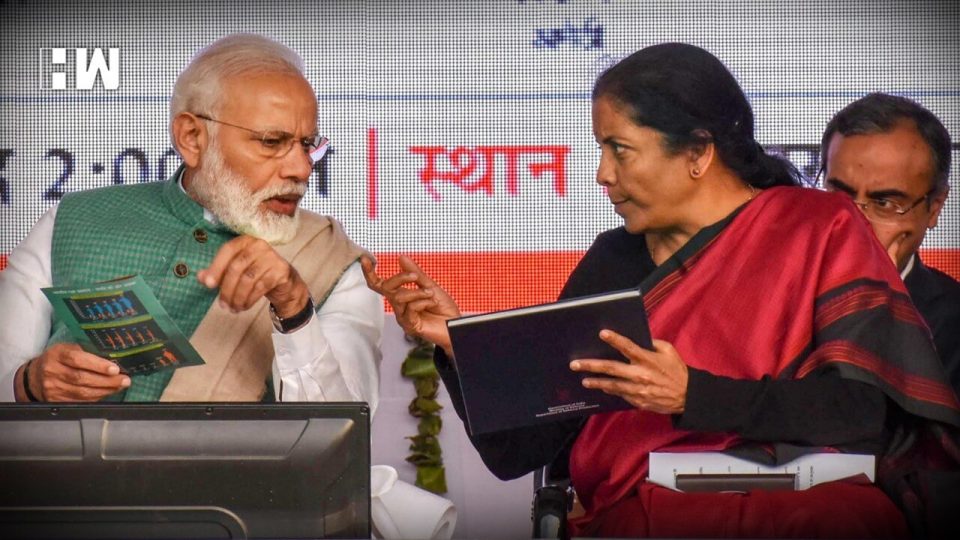Obliterating records or taking them out of context and give them altogether a new spin has been the pattern we have been seeing for the last six years.
No #data on migrant workers, no data on farmer suicides, wrong data on fiscal stimulus, dubious data on #Covid deaths, cloudy data on GDP growth — this Government gives a whole new meaning to the term #NDA! pic.twitter.com/SDl0z4Hima
— Shashi Tharoor (@ShashiTharoor) September 22, 2020
Hitting below the belt
In what could be described as most undemocratic gagging, the BJP-led government passed the farm reforms bill in the Rajya Sabha, using a voice vote, which the Opposition said, was conducted by breaking the rules. Angered, the members of Parliament protested and eight of them from the Opposition were suspended. This entire drama is a repeat of what we have witnessed in Maharashtra previously. In exactly the same manner, Devendra Fadnavis had ensured he became the Chief Minister in 2014.
On the day of the vote, Fadnavis resorted to a voice vote and was supported by the Nationalist Congress Party. This crucial voice vote helped Fadnavis and the 13-day government led by the BJP win the majority with just an ‘aye’ from the legislators. Obviously, the miffed Shiv Sena, which was part of the alliance, termed it as ‘strangling democracy’. On September 21, in Parliament, it was the same story.

Obliterating records

However, Sawant had pointed out how the Modi government was concealing the data for Gujarat even from the Central government. Moreover, during the Fadnavis government’s rule, in 2014 alone, more than 60,000 suicides were recorded, with an average of 160 suicides every day. This was just the beginning of replicating the ‘Gujarat model’ with the NCRB, to hide the failure of the BJP governments in various states. Or better still, to obliterate records that could show the government in a poor light. Officials, as well as ministers too, had been issued instructions not to leak information to the media at large.
Ward off media


This tendency to hide facts and data on coronavirus is not restricted to India alone. Journalists are being barred from speaking to hospitals and getting data on the pandemic in many countries. In America, journalists are being barred, as were students of the University of Florida, from accessing the information on how they are being protected from Covid-19. In the Philippines, journalists have been threatened with prison time if they do so. In fact, the Committee to Protect Journalists is tracking the arrests of reporters over coronavirus coverage in India, Venezuela, Niger and other places around the world.
High courts lead the way
There still is some hope from the high courts in the non-BJP ruled states, as they seem to be asking their governments and agencies to fall in line regarding sharing of information with the media. However such is not the case with the Supreme Court. On September 22, the Government of India asked the Supreme Court to legalise censorship. Although the apex court opted not to institute any censorship, it accepted the government’s version that the exodus of migrant workers was caused due to fake news.
The fact is, right from prior to the national lockdown on March 24, we have been seeing the immense trust issues the public has with the government. Right from hoarding essentials, to the exodus of migrant workers, the people do not trust the government. Worse still, the government has stonewalled journalists and their any attempts to access information on coronavirus. The Telangana High Court had, on June 8, pulled up the government of that state for hiding important information from the citizens. The petitioner said there needed to be clarity on the information given in the daily health bulletin and that the court needed to direct the state to include information on tests conducted on asymptomatic patients.

Meanwhile, even Justice Gautam Patel of the Bombay High Court, in a videoconference hearing, was told by an advocate during hearing a bunch of commercial arbitration, informed the court his clients had submitted some material in a sealed cover. Justice Patel made it clear to the parties, “At least in my courts, there is no question – and there will never be a question – of anything being done ‘in sealed cover’. After the advocate aired the apprehensions of his client that the material would reach the press, the judge made it abundantly clear that he would not gag the media.
Neeta Kolhatkar is a senior journalist with over 30 years of work experience across different media platforms. She is currently a freelancer and media consultant.
(Views Expressed Are Personal)
As an independent media platform, we do not take advertisements from governments and corporate houses. It is you, our readers, who have supported us on our journey to do honest and unbiased journalism. Please contribute, so that we can continue to do the same in future.

